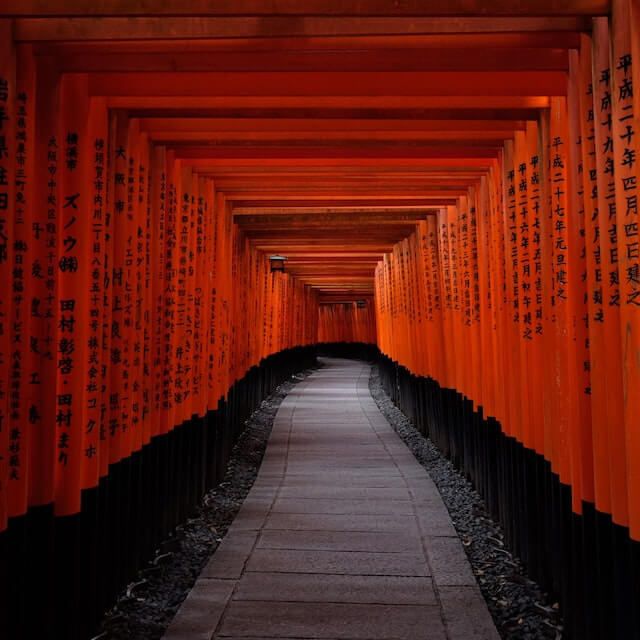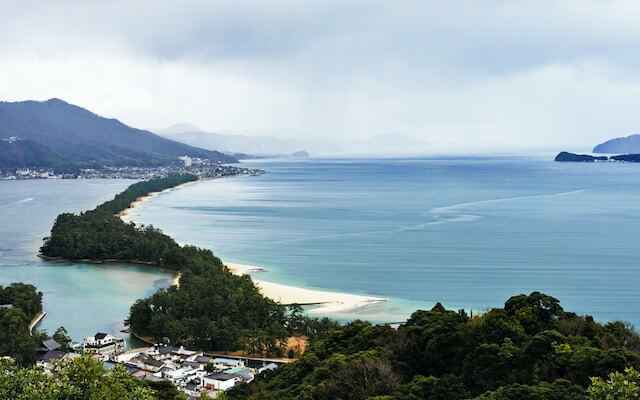Making the trip to Japan’s former capital? It’s a city packed with nods to the country’s history and tradition – and what better Japanese tradition is there than bathing in hot water?
There’s no shortage of bath houses and spas in Kyoto to choose from, as we’ve detailed in a previous article. But what you might not expect of such a large city is hot springs with naturally heated water piped up from hundreds of meters underground. Kyoto is full of them, whether we’re talking about the main city or the wider prefecture.
Here are Kyoto’s top 7 natural onsen areas:
This article will have something from just about every corner of the prefecture, so let’s dive in. Oh, and if you’re looking for something to warm your soul before you warm your body, check out some of Kyoto’s incredible illumination displays.
1. Arashiyama Onsen
If you want to brush up against nature but don’t want to venture too far from the comforts of the city to do it, Arashiyama Onsen is your best bet. Located in the western Arashiyama district of Kyoto, this hot spring offers incredible views regardless of the season.
Looking for cherry blossoms? Come in the spring.
Want a stunning display of fall colors? Try early-mid November.
Are lush bamboo forests or blankets of snow more your thing? Jump in during the hotter or colder months.

Photo by Walter Mario Stein
This onsen offers a blend of indoor and outdoor baths, alongside several other services. Here’s some of what you can expect:
- Relaxation rooms for reading or just laying around
- Massage services for separate fees
- A range of different baths
- Sauna rooms
After exploring the famous Arashiyama Bamboo Grove, put a cherry on top with a relaxing Kyoto hot spring visit.
2. Takao Onsens

A little north of Arashiyama, deeper in the mountains, is the scenic Takao region. It’s a quaint option full of traditional ryokan (Japanese inn) options that takes less than an hour to get to by bus from central Kyoto.
The area has a unique combination of natural beauty and historical sites, including the lovely Kiyotaki River and three major temples:
- Kozanji temple (famed for having the first manga illustration)
- Saimyoji temple
- Jingoji temple
Fall is the best time to visit Takao, and if you book a room at one of the local Japanese inns you can expect beautiful foliage all around as you soak up the hot spring water.
Onsen to unwind and recharge.
3. Uji Natural Hot Spring: Genji no Yu
South of the hustle and bustle of Kyoto proper is the town of Uji. And within that smaller population is Genji no Yu, a hot spring that pipes in naturally heated water from underground while providing a modern atmosphere with all of the amenities that go with it.
This onsen is only for day-trips, but you can pack quite a bit into that trip. Some of Genji no Yu’s facilities include:
- A wide variety of baths and saunas
- Spa services like massages
- Course dinners
- Relaxation rooms
Bathing fees at this Kyoto onsen are ¥1,000 per adult while food and spa services are extra.
4. Ohara Onsens
Wanting to dip a little deeper into the world of hot baths? Look no further than Ohara, a small town just northeast of the city of Kyoto. It’s a quiet little town known for extremely photogenic temples, calming forests, and all-natural hot spring water.

Photo by Jordy Meow
The best way to enjoy Ohara is to book a room at one of its many ryokans and immerse yourself in what will feel like a scene from a samurai movie. Order set meals, enjoy the tatami floor rooms, and put your feet up.
The area is best known for its nature walk that weaves between temples like Sanzenin and calming waterfalls. To get to Ohara, take a 1-hour bus ride from central Kyoto.
5. Fushimi Onsen

Photo by Junsheng Chen
If you’re going to Kyoto, you can’t leave without seeing Fushimi Inari Taisha, the famed Shinto shrine with orange tori gates lining all the way up a mountain path. And if you’re heading there, you’ll be right next to some of Kyoto’s best onsen.
The Fushimi area of Kyoto is full of different facilities, so take your pick from some of the following day trip and ryokan options:
To take your relaxation experience over the top, consider visiting the nearby sake district and sampling some of the local drinks.
6. Kurama Onsen
Nestled in the mountains just north of Kyoto, Kurama Onsen is a full-on nature retreat with a twist of Japanese spirituality. Around one corner is a famed Buddhist temple, and around the next is a hiking trail.
Accessible via a 45 minute train ride from Kyoto station (with transfers), Kurama Onsen is perfect for those seeking relaxation and rejuvenation. The only problem is that it’s been closed since 2021. However, we’re keeping it on the list in the hopes that it one day re-opens, so check their website for the latest info.
In normal times you can book a classic ryokan-style room that gives you access to the indoor and outdoor facilities. If you’re just looking to visit this all-natural Kyoto onsen, you can pay ¥2,500 for access to all baths, or ¥1,000 for only the outdoor one.
7. Miyazu
For those looking to get far away from central Kyoto for a night – while still technically being inside of the Kyoto district – Miyazu is the top spot.

Photo by Jim Zenn
A coastal location far north of central Kyoto, Miyazu is famous for Tango Amanohashidate Oeyama Quasi-National Park. If you show any Japanese adult a photo of its unique land bridge that crosses from one corner of the peninsula to the other, they’ll immediately recognize it. It’s also the site of one of Japan’s three most celebrated views.
It’s a bit of a hike to get up to Miyazu at about a 3-hour train ride or 1.5 hours by car, but there are several coastal onsen options to choose from, making it a little different from the more mountainous choices on this list.
Conclusion
While Kyoto is most famous for its central city, there’s a much wider area full of sights and sounds when you include the entire prefecture. And if you’re looking for a great onsen, Kyoto has you covered.
From coastal locations to mountain ryokans, you can choose your own adventure. And if you’re just looking for something relaxing at the end of a long day of temple hopping within the city, there are options nearby too.




